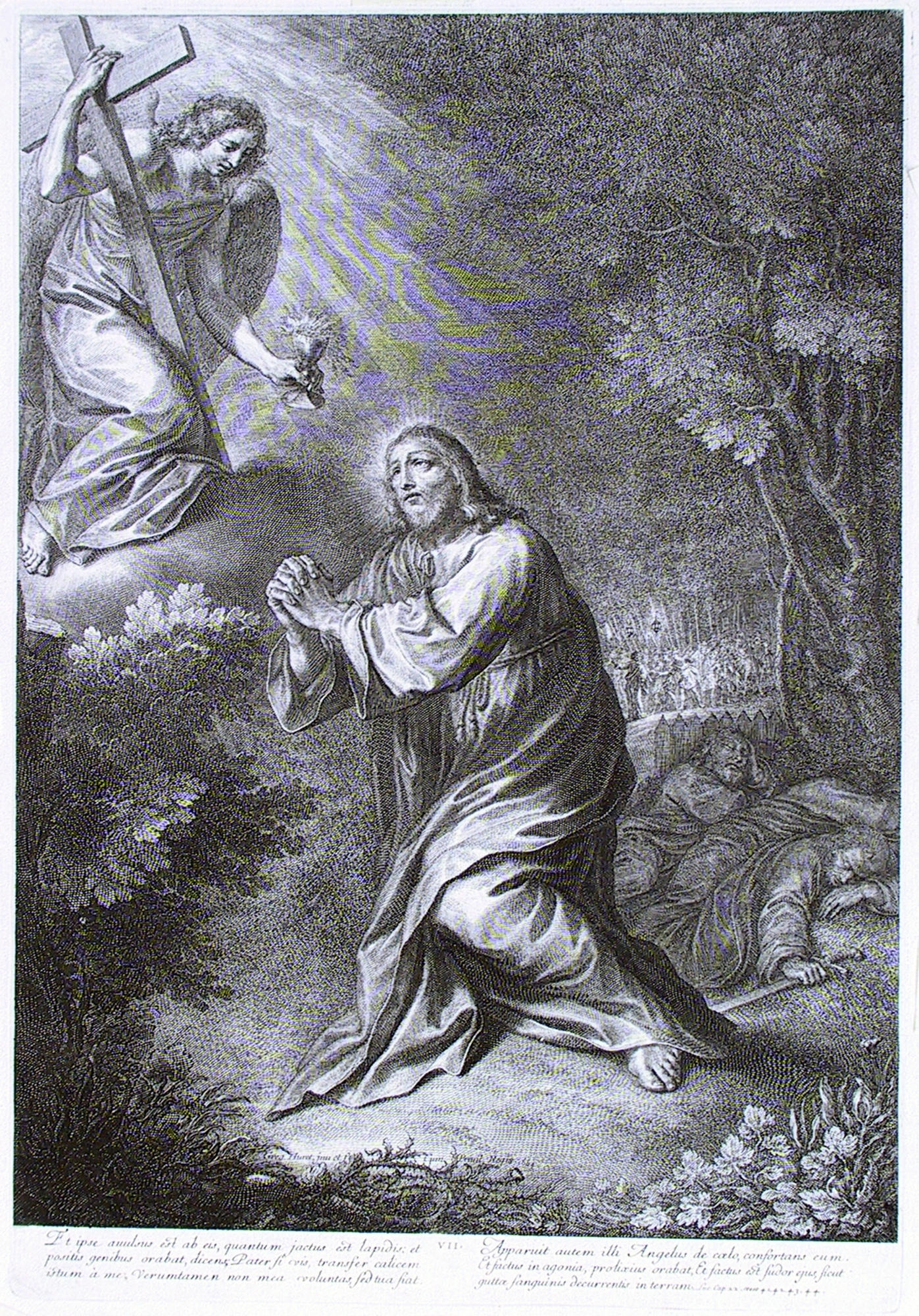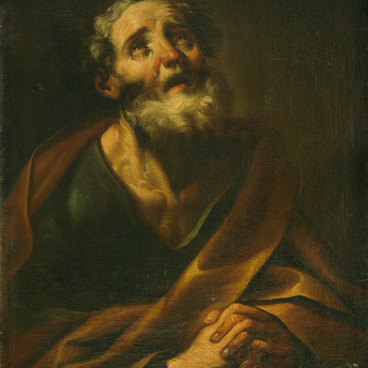Pierre-Imbert Drevet, called the Younger Pierre (or Pierre the Son) was a French copper engraver and a portrait master. His was born in a famous French family of engravers. He was the son and student of Pierre Drevet the Elder (1663–1738), and excelled his father at skill. Pierre-Imbert Drevet is considered one of the main representatives of a period of the engravings bloom in France.
He created a series of interpretations after paintings by major French painters. Drevet brilliantly conveyed objects texture: satin, silk, lace, and metal products. Upon that, realistic interpretation of pictorial images was combined with the mastery of the engraver’s technique. The Royal Academy of Painting and Sculpture awarded Pierre-Imbert Drevet the Younger the title of an academician at the age of 27, and the king gave him apartments in the Louvre. The engraving Christ in the Garden of Gethsemane after Restout was the last work of the master.
Jean Restout was a French artist of the early 18th century, who mainly created paintings based on mythological and religious stories.
The theme of Gethsemane prayer or The Agony in the Garden can be considered a rather popular subject in the visual arts. According to the Gospel of Luke, after the Last Supper, Jesus went with Peter, John and James to the Garden of Gethsemane to pray on the slopes of the Mount of Olives.
Jean Restout was a French artist of the early 18th century, who mainly created paintings based on mythological and religious stories.
The theme of Gethsemane prayer or The Agony in the Garden can be considered a rather popular subject in the visual arts. According to the Gospel of Luke, after the Last Supper, Jesus went with Peter, John and James to the Garden of Gethsemane to pray on the slopes of the Mount of Olives.
Christ went away from them to the distance of a thrown stone (moved from them at a stone’s cast) and prayed alone. He asked his father to spare him but immediately after that he accepted the God’s will. The Apostles James, John, and Peter were in deep sleep. At the end of Jesus’ prayer, an angel came down to comfort him. The artistic integrity and semantic content of representation of this Gospel event consists of various components: pictorial, associative, metaphorical, and symbolic.
Usually, when interpreting this story, artists followed the gospel narrative accurately, thus portrayed a praying Christ, an angel, and the three sleeping disciples. According to the canon, in The Agony in the Garden the loneliness of Jesus Christ is to be emphasized. He was always depicted in the centre of the composition with his sleeping followers in the foreground. The engraving presented at the exhibition was received by the museum in 1919 from the estate of Baryatino, Tarussky District, Kaluga Province, as part of the private art collection of the Gorchakov princes.



